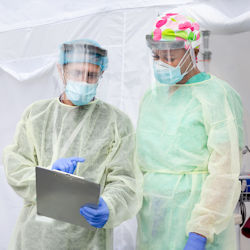Exposure Control Methods
Precaution Strategies
Three precaution strategies to prevent the transmission of bloodborne pathogens are commonly used in healthcare and other industries: universal precautions, standard precautions, and Transmission-based precautions.

Universal Precautions (UP): This infection control strategy was developed by the CDC and adopted by OSHA to prevent the transmission of bloodborne pathogens, such as HIV and hepatitis B, in healthcare settings. It involves assuming that all bodily fluids are potentially infectious and taking measures to prevent exposure to them. For example, healthcare workers are required to wear gloves, gowns, masks, and eye protection when handling or coming into contact with bodily fluids.
Standard Precautions (SP): This is a broader infection control strategy that was developed in 1996 and includes practices to prevent the transmission of both bloodborne and non-bloodborne pathogens in healthcare settings. It includes measures such as hand hygiene, personal protective equipment (PPE), safe injection practices, and environmental controls to prevent the spread of infections.
Transmission-based precautions (TBP): These are additional measures that are taken when a patient is known or suspected to be infected with a highly contagious or dangerous pathogen, such as tuberculosis, measles, or Ebola virus. These precautions include additional PPE, isolation of the patient, and special handling and disposal of contaminated materials.
For more information on each of these precaution strategies, visit OSHA's Worker protections against occupational exposure to infectious diseases
Knowledge Check Choose the best answer for the question.
6-1. The "Universal Precautions" concept considers all human blood and OPIM as _______.
You forgot to answer the question!
